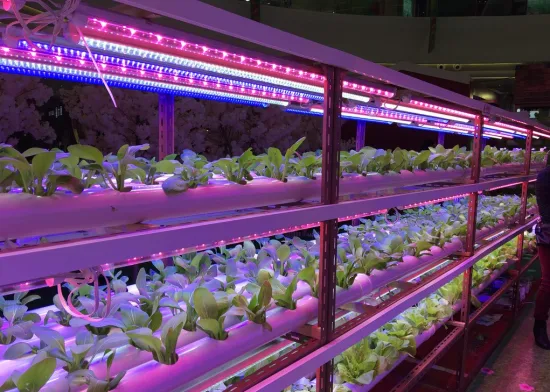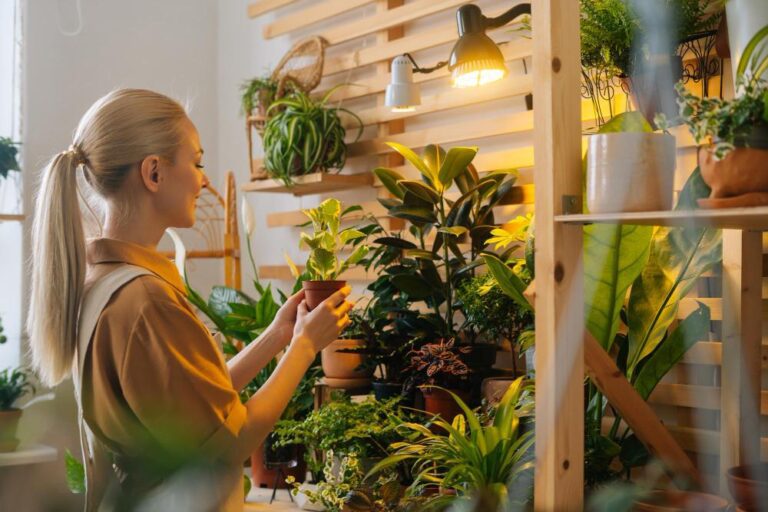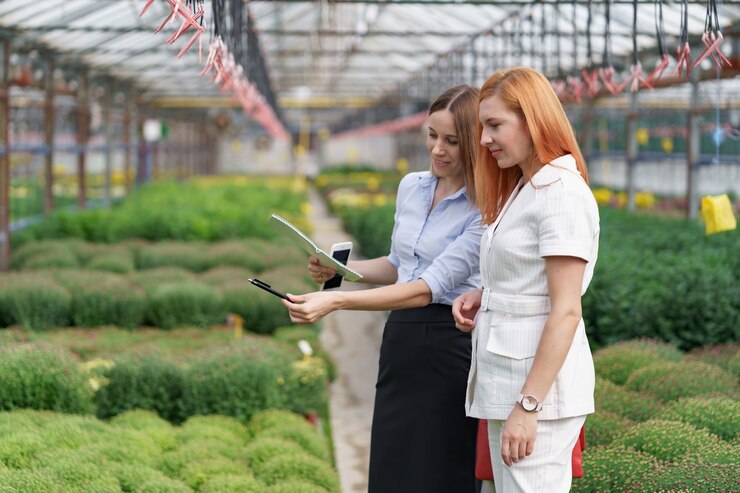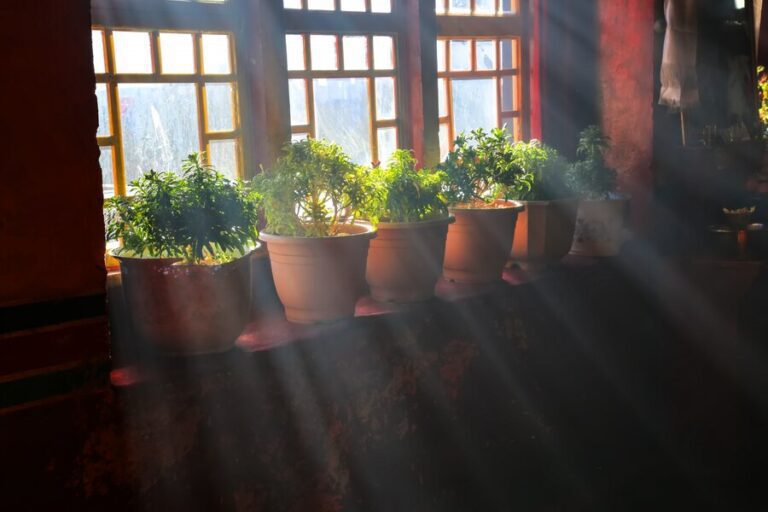How to Use Lighting Controllers, Movers, and Meters to Optimize Your Indoor Grow Light Setup
Table of Contents
Understanding the Importance of Lighting Control in Indoor Grow Light Setups
Lighting control plays a crucial role in indoor grow light setups, affecting both the quality and quantity of plant growth. By providing the optimal light intensity, color spectrum, and duration, growers can manipulate plant development, enhance yield, and maximize energy efficiency.
Firstly, controlling the lighting in indoor grow spaces allows growers to simulate natural sunlight patterns, ensuring plants receive the correct amount of light for each growth stage. Different plants have varying light requirements during their vegetative and flowering stages, and by adjusting the lighting accordingly, growers can promote healthy development and prevent issues such as leggy growth or premature flowering. Additionally, precise lighting control enables the customization of light spectrum, allowing growers to manipulate plant characteristics such as flavor, aroma, and potency in crops like herbs or cannabis.

The ability to fine-tune lighting parameters in indoor grow setups not only empowers growers to optimize plant growth but also enables them to save energy and reduce costs. With the use of lighting controllers, timers, and light meters, growers can program lighting schedules to match plant needs, preventing unnecessary energy consumption and minimizing light wastage during non-productive periods. This not only benefits the environment but also significantly reduces electricity bills, making indoor grow operations more sustainable and economically viable.
Selecting the Right Lighting Controller for Your Indoor Grow Operation
When it comes to selecting the right lighting controller for your indoor grow operation, there are several factors to consider. First and foremost, it’s important to understand the specific needs of your plants. Different plants require different amounts and spectrums of light, so it’s essential to choose a lighting controller that allows for precise customization.
Another key consideration is the size and layout of your grow space. If you have a large operation with multiple grow rooms, you may need a lighting controller that can handle multiple zones and different light schedules. On the other hand, if you have a smaller setup, a simpler controller may be sufficient.
Additionally, it’s important to think about the ease of use and functionality of the controller. Look for features such as programmable timers, dimmable outputs, and the ability to adjust light intensity and spectrum. A user-friendly interface and intuitive controls can greatly simplify the management of your lighting system.

Lastly, don’t forget to consider the overall quality and reliability of the lighting controller. Investing in a reputable and well-built controller will not only ensure consistent performance but also provide peace of mind knowing that your plants are receiving the optimum lighting conditions for healthy growth.
By carefully considering your plant’s needs, the size of your grow space, ease of use, and the quality of the controller, you can select the right lighting controller to maximize the potential of your indoor grow operation. Remember, a well-designed lighting system is integral to the success of your plants and ultimately, your gardening endeavors.
Exploring Different Types of Lighting Controllers and Their Functions
Lighting controllers play a crucial role in indoor grow light setups, allowing growers to have precise control over the lighting conditions for their plants. There are various types of lighting controllers available on the market, each with its own unique functions and features.
One common type of lighting controller is the timer-based controller. These controllers allow growers to set specific on/off schedules for their grow lights, mimicking the natural light cycle and ensuring consistent and optimal lighting conditions for the plants. With timer-based controllers, growers can automate the process of turning the lights on and off, saving time and effort.
Another type of lighting controller is the dimming controller. These controllers allow growers to adjust the intensity of their grow lights, providing flexibility in meeting the specific lighting requirements of different plant species or growth stages. By controlling the light intensity, growers can optimize photosynthesis rates, promote healthy plant growth, and avoid issues like light stress or heat damage.
In addition to timer-based and dimming controllers, there are also advanced lighting controllers that offer more sophisticated features. These controllers often come with programmable settings, allowing growers to create customized lighting programs based on the specific needs of their plants. Some advanced controllers even have built-in sensors that can monitor environmental factors like temperature, humidity, and CO2 levels, providing growers with valuable data for better plant management.
Overall, the choice of lighting controller will depend on factors such as the type of plants being grown, the desired level of control, and the grower’s budget. By understanding the different types of lighting controllers available and their functions, growers can make informed decisions to create an optimal lighting environment for their indoor gardens.
Setting Up and Configuring Your Lighting Controller for Optimal Performance
To ensure optimal performance for your indoor grow light setup, setting up and configuring your lighting controller correctly is crucial. The lighting controller serves as the central command system, allowing you to control and monitor your grow lights with precision. Here are some essential steps to follow when setting up and configuring your lighting controller:
1. Placement and Installation: Begin by selecting an appropriate location for your lighting controller. It should be positioned near your grow lights for easy access and visibility. Install the controller following the manufacturer’s instructions, ensuring all connections are secure and properly grounded.
2. Power and Network Connection: Connect the lighting controller to a reliable power source and establish network connectivity if your controller supports remote access or smartphone control. This will enable you to monitor and adjust your lighting settings conveniently from anywhere.
3. Programming and Scheduling: Familiarize yourself with the controller’s programming options and set up a schedule that provides the optimal lighting conditions for your plants at each growth stage. Adjust the intensity and spectrum according to the specific requirements of your crop. It’s essential to consult relevant resources or seek advice from experts to determine the ideal lighting parameters for different plants.
4. Environmental Sensors Integration: Some advanced lighting controllers allow you to connect and integrate environmental sensors to automatically adjust lighting settings based on factors such as temperature, humidity, and CO2 levels. This integration can help you create a controlled environment that promotes healthy plant growth and maximizes yields.
Remember, each lighting controller may have unique features and programming capabilities, so it’s crucial to refer to the manufacturer’s instructions and user manual for specific setup and configuration guidelines. By carefully setting up and configuring your lighting controller, you can effectively manage your grow lights, optimize plant health, and achieve the desired results in your indoor garden.
Utilizing Lighting Controllers to Adjust Light Intensity and Spectrum
Lighting controllers are essential tools in indoor grow setups as they allow growers to precisely adjust light intensity and spectrum to meet the unique needs of their plants. By utilizing lighting controllers, growers can create optimal lighting conditions that promote healthy growth and maximize yield.
Adjusting light intensity is crucial as different stages of plant growth require varying levels of light. Seedlings, for example, benefit from lower light levels to prevent burning and promote strong root development. On the other hand, flowering plants thrive with higher light intensities to stimulate bud development and increase overall yield. Lighting controllers enable growers to easily adjust the intensity of their grow lights, ensuring that plants receive the appropriate amount of light at each stage of growth.
Here’s a table on utilizing lighting controllers to adjust light intensity and spectrum:
| Feature | Description |
|---|---|
| Lighting Controller Type | Manual Controllers, Programmable Timers, Smart Controllers (IoT-enabled), Dynamic Spectrum Controllers |
| Adjustable Parameters | Light Intensity, Light Spectrum, Duration of Light Exposure, On/Off Timing |
| Manual Controllers | Basic control of light intensity through knobs or buttons. Limited spectrum adjustments. |
| Programmable Timers | Allows setting specific times for light cycles. Limited spectrum adjustments. |
| Smart Controllers | IoT-enabled devices with remote control and automation features. May offer spectrum customization. |
| Dynamic Spectrum Controllers | Advanced controllers that dynamically adjust spectrum based on plant growth stages and environmental conditions. |
| Benefits | Precision in controlling light conditions, optimizing for plant growth. Energy efficiency with timed schedules. |
| Considerations | Initial cost, ease of use, compatibility with grow lights, integration with other smart systems. |
| Applications | Greenhouses, indoor farms, research facilities, home gardening. |
Additionally, lighting controllers also allow for precise control over the light spectrum. Different wavelengths of light have specific effects on plant growth and development. By altering the spectrum, growers can influence plant morphology, flowering, and even medicinal compound production. Whether it’s tweaking the red and blue wavelengths for vegetative growth or increasing the ratio of red to far-red light during flowering, utilizing lighting controllers empowers growers to fine-tune the spectrum to achieve desired outcomes.
Maximizing Energy Efficiency with Lighting Controllers and Timers
Lighting controllers and timers offer valuable tools for maximizing energy efficiency in indoor grow setups. By fine-tuning light schedules and duration, growers can optimize plant growth while minimizing energy consumption. These devices allow for precise control over lighting cycles, ensuring that plants receive the right amount of light at the right time.
One of the key benefits of lighting controllers and timers is the ability to automate the lighting schedule. By programming specific on and off times, growers can ensure consistent and optimized lighting conditions for their plants. This not only eliminates the need for manual adjustments but also prevents any human error that may result in unnecessary energy usage. Additionally, some advanced lighting controllers even have built-in sensors that can detect natural light levels, allowing for further energy savings by automatically adjusting the artificial lighting output accordingly.

In addition to scheduling, lighting controllers and timers also provide the option to dim or adjust light intensity. This functionality is particularly useful during different stages of plant growth. For instance, young plants may require lower light intensities to prevent damage, while mature plants may benefit from increased intensity to promote flowering and fruiting. By remotely controlling these settings, growers can fine-tune light levels without having to physically adjust each individual light source. This not only saves time but also reduces energy waste by avoiding excessive lighting output.
Overall, lighting controllers and timers are indispensable tools for indoor gardeners looking to maximize energy efficiency. By automating lighting schedules and adjusting light intensity, growers can create optimized growth conditions for their plants, while also minimizing energy consumption. Incorporating these devices into your indoor grow setup can lead to significant energy savings and ultimately contribute to a more sustainable gardening practice.
Enhancing Plant Growth and Yield Through Dynamic Lighting Control
Dynamic lighting control is a crucial element in indoor grow setups as it plays a significant role in enhancing plant growth and increasing yield. By providing plants with the optimal light intensity and spectrum at different stages of their growth cycle, dynamic lighting control allows for precise and efficient cultivation.
One of the primary benefits of dynamic lighting control is its ability to mimic natural sunlight, which is essential for photosynthesis and overall plant health. By adjusting the light intensity and spectrum based on the specific needs of different plant species and growth stages, growers can create an environment that maximizes photosynthetic activity and promotes robust growth.
Moreover, dynamic lighting control allows for the manipulation of lighting cycles, replicating natural day and night patterns. This synchronization with the plant’s biological clock helps regulate internal processes, such as flowering and fruit development. By providing the appropriate light duration and intensity during each phase, growers can optimize plant growth and yield. Additionally, by utilizing lighting controllers to implement gradual changes in light intensity and spectrum, plants can acclimate better and avoid stress, leading to healthier and more productive crops.
In conclusion, dynamic lighting control has proven to be a game-changer in indoor grow operations. By providing plants with the ideal light intensity, spectrum, and duration, growers can enhance plant growth, increase yield, and ultimately optimize their cultivation efforts. With the right lighting controller and a well-configured setup, the possibilities for improving indoor gardening outcomes are endless.
Integrating Lighting Movers for Uniform Light Distribution in Indoor Grows
One of the most crucial factors in indoor gardening is ensuring that your plants receive uniform light distribution. In order to achieve this, integrating lighting movers into your indoor grow setup is essential. Lighting movers are designed to move grow lights back and forth along a track or rail system, ensuring that every plant in your grow space receives an equal amount of light exposure.
By utilizing lighting movers, you can effectively eliminate the issue of hotspots and shadowed areas in your grow space. These devices allow your grow lights to move across your plants in a smooth and continuous motion, providing them with the optimal amount of light for growth and development. In addition to enhancing light distribution, lighting movers also help to prevent the occurrence of light burn on your plants, as they ensure that your grow lights are never too close to the plant canopy for extended periods of time.

When selecting a lighting mover for your indoor grow space, it’s important to consider the size of your grow area and the weight of your grow lights. Different lighting movers are designed to accommodate specific weights and sizes, so be sure to choose one that is suitable for your setup. Additionally, consider the speed and control options of the lighting mover, as these factors will impact the efficiency and effectiveness of light distribution across your plants.
Integrating lighting movers into your indoor grow setup is a game-changer when it comes to achieving uniform light distribution. By investing in these devices, you can ensure that every plant in your grow space receives adequate amounts of light, resulting in healthier growth, improved yields, and better overall plant development.
Choosing the Right Lighting Mover for Your Indoor Grow Space
Lighting movers are an essential component of indoor grow setups, as they help ensure uniform light distribution across your plants. When choosing the right lighting mover for your indoor grow space, there are several factors to consider.
First and foremost, it is crucial to assess the size and layout of your grow space. Different lighting movers have specific coverage areas, and selecting one that aligns with the dimensions of your space will guarantee optimal light distribution. Additionally, consider the weight capacity of the lighting mover, especially if you plan on using multiple lights or have heavier fixtures. It is essential to choose a lighting mover that can support the weight of your lights without any strain or compromise on its functionality.
Another factor to keep in mind is the movement pattern of the lighting mover. Some models offer linear movement, while others provide rotational or both. The movement pattern you choose will largely depend on the specific needs of your plants and the type of growth you want to encourage. For example, some plants may benefit from a constant back-and-forth linear movement, while others may require a more diverse, random motion to simulate natural sunlight.
In conclusion, selecting the right lighting mover for your indoor grow space is a critical decision that can significantly impact the overall success of your plants. By considering factors such as the size and layout of your grow space, weight capacity, and movement pattern options, you can make an informed choice that ensures your plants receive the uniform light distribution they need for optimal growth.
Installing and Calibrating Lighting Movers for Effective Light Coverage
To ensure effective light coverage in your indoor grow space, it is essential to properly install and calibrate lighting movers. Lighting movers are devices that enable the movement of grow lights, allowing for more uniform light distribution across your plants. This movement helps to prevent hot spots and shadows, ensuring that every plant receives an optimal amount of light for healthy growth.
When installing lighting movers, it is important to consider the size and layout of your grow space. Position the movers strategically, taking into account the height and spacing of your plants. This will help to ensure that the light is evenly distributed across the entire canopy. Additionally, make sure to securely mount the lighting movers to prevent any movement or instability that could disrupt the light coverage.
Watch this video to know more about Lighting Controllers!
Calibration is another crucial step in optimizing the performance of your lighting movers. This involves adjusting the speed and duration of the movement to achieve the desired coverage. It is recommended to start with slower movements and gradually increase the speed, while observing the light distribution and plant response. Tweak the settings until you achieve an even coverage across the entire grow area. Regularly monitoring and fine-tuning the calibration will help to maintain consistent and effective light coverage for your plants.
• Lighting movers are essential for ensuring uniform light distribution in indoor grow spaces
• Proper installation and calibration of lighting movers is crucial for effective light coverage
• Strategic positioning of lighting movers based on the size and layout of the grow space is important
• Securely mounting the lighting movers prevents any disruption in light coverage due to movement or instability
• Calibration involves adjusting the speed and duration of movement to achieve desired coverage
• Start with slower movements and gradually increase speed while observing light distribution and plant response
• Regular monitoring and fine-tuning of calibration helps maintain consistent and effective light coverage.
Combining Lighting Controllers and Movers for Enhanced Light Management
Lighting controllers and movers are two essential elements in indoor grow light setups. When combined, they offer enhanced light management, allowing growers to achieve optimal light distribution and coverage for their plants.
By incorporating a lighting controller and mover into your indoor grow space, you gain greater control over the positioning and intensity of the light source. This dynamic control enables you to adjust the light angles and distances to ensure uniform light distribution across your plants, minimizing any shadowed areas and maximizing overall light absorption.
The lighting controller acts as the central hub, allowing you to set specific schedules and regulate light intensity for different stages of plant growth. It provides the flexibility to program sunrise and sunset simulations, mimic natural lighting conditions, and vary the spectrum of light emitted.
On the other hand, a lighting mover adds an extra layer of efficiency by automating the movement of the light source. This automated movement ensures that every plant receives an equal amount of light, reducing the risk of uneven growth and maximizing yield potential. Additionally, the constant repositioning of the light source helps to mitigate the development of hotspots and promotes uniform light penetration throughout the canopy.
Combining lighting controllers and movers in your indoor grow space not only improves light management but also saves energy. By precisely controlling the light intensity and spectrum, as well as ensuring uniform coverage, you can optimize energy usage and minimize wastage.
In the next section, we will delve deeper into the factors to consider when choosing the right lighting mover for your indoor grow space. Stay tuned to discover the various options available and how they can further enhance your light management capabilities.
Utilizing Light Meters to Measure and Optimize Light Levels in Your Grow Space
To ensure optimal growth and health of your plants in an indoor grow space, it is crucial to measure and optimize the light levels. This is where light meters come into play, providing precise measurements and valuable insights that can guide your lighting decisions.
Light meters, also known as lux meters or illuminance meters, are devices designed to quantify the amount of light intensity in a particular area. By measuring the illuminance, or the amount of light falling on a surface, you can determine if your plants are receiving the right amount of light for their growth stage.
Not all plants require the same light levels, and it is essential to understand the specific requirements of your crops. Light meters help you monitor and adjust the light intensity to meet these needs, ensuring that your plants receive the optimal amount of light for photosynthesis, growth, and overall development.
By regularly measuring the light levels, you can identify any discrepancies or inconsistencies that may be affecting your plant’s health. If you notice variations in light intensity across your grow space, you can make the necessary adjustments to achieve uniform lighting and promote balanced growth throughout your plants.
Additionally, light meters can aid in identifying potential issues such as light hotspots or shadowed areas. This information enables you to position your grow lights strategically, ensuring even coverage and minimizing the risk of light-related problems.
In conclusion, light meters are indispensable tools for any indoor gardening enthusiast looking to optimize their grow space. By measuring the light levels and making data-driven adjustments, you can create an environment that promotes healthy plant growth, leading to higher yields and overall success in your indoor gardening endeavors.
Monitoring and Fine-tuning Your Indoor Grow Light Setup with Light Meters
Monitoring and fine-tuning your indoor grow light setup is a crucial step in ensuring optimal plant growth and yield. Light meters are invaluable tools that enable growers to measure and optimize light levels in their grow space. By monitoring the amount of light reaching your plants, you can make informed adjustments to create the ideal light conditions for maximum productivity.
Light meters provide accurate and reliable measurements of light intensity, allowing you to assess the effectiveness of your current lighting setup. By understanding the specific light requirements of your plants, you can fine-tune your indoor grow operation and ensure that your plants receive the optimal amount of light they need to thrive. Additionally, light meters allow you to identify any irregularities in light distribution, helping you to avoid hotspot areas or areas with insufficient light coverage.
By regularly monitoring and fine-tuning your indoor grow light setup with light meters, you can ensure that your plants are receiving the right amount and quality of light, resulting in healthier plants and higher yields.
What is the importance of monitoring light levels in an indoor grow light setup?
Monitoring light levels is important because it helps ensure that plants are receiving the optimal amount of light for photosynthesis and growth. It allows growers to adjust light intensity and spectrum to meet the specific needs of their plants.
How do light meters help in optimizing light levels?
Light meters measure the intensity of light in a grow space, helping growers determine if the light levels are too low or too high for their plants. By using light meters, growers can fine-tune their indoor grow light setup and ensure that their plants are receiving the ideal amount of light.
Can light meters help maximize energy efficiency in indoor grow operations?
Yes, light meters can help maximize energy efficiency by providing accurate measurements of light levels. This allows growers to adjust the intensity and duration of their grow lights to avoid over- or under-illumination, reducing energy waste and optimizing plant growth.
How can lighting controllers and timers be used in conjunction with light meters?
Lighting controllers and timers can be used in conjunction with light meters to automatically adjust the intensity and duration of grow lights based on the measured light levels. This ensures consistent and optimal lighting conditions for the plants, saving energy and maximizing growth.
Are lighting movers necessary for uniform light distribution in indoor grows?
Lighting movers are not necessary for all indoor grows, but they can greatly enhance light distribution. They move the grow lights along a track, ensuring that each plant receives an equal amount of light, leading to more uniform growth and higher yields.
How do lighting movers work in an indoor grow setup?
Lighting movers are typically motorized devices that move grow lights along a predetermined path. This allows the lights to cover a larger area and ensures that all plants receive an even amount of light, promoting uniform growth and increased yield.
Is it necessary to calibrate lighting movers after installation?
Yes, it is important to calibrate lighting movers after installation to ensure accurate and precise movement of the grow lights. Calibration involves adjusting the speed, direction, and range of motion of the lighting movers to achieve optimal light coverage.
Can light meters be used to measure light levels in different areas of a grow space?
Yes, light meters can be used to measure light levels in different areas of a grow space. By taking measurements at various locations, growers can identify any areas with low or excessive light levels and make necessary adjustments to optimize plant growth.
How frequently should growers monitor and fine-tune their indoor grow light setup with light meters?
It is recommended to monitor and fine-tune the indoor grow light setup regularly, ideally on a weekly or bi-weekly basis. This ensures that any changes in light levels or plant growth are promptly addressed, leading to optimal results in the grow operation.

Pallavi Gupta is a burgeoning writer at SouthElMonteHydroponics, blending her passion for data analysis with a keen interest in biotechnology. Currently pursuing a Bachelor’s in Biotechnology at Amity University, Pallavi delves into the intricacies of life sciences while gaining hands-on experience in the exciting world of data analysis. Her unique background provides a fresh perspective on hydroponic farming, as she explores the intersection of biotechnology and sustainable agriculture. Through her writing, Pallavi aims to bridge the gap between data-driven insights and innovative farming practices, inspiring others to harness technology for a greener future.





